Table of Contents
POINT OF VIEW
There are books told from the points of view of dolls, toy soldiers, and stuffed rabbits; of horses, dogs, cats, birds, and mice; and, of course, of all possible kinds of people.
You never really understand a person until you consider things from his point of view…until you climb into his skin and walk around in it. (Harper Lee, To Kill a Mockingbird)
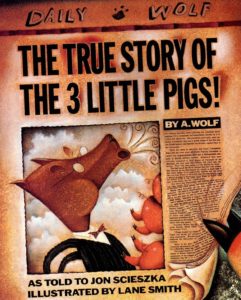
|
Jon Scieszka’s The True Story of the Three Little Pigs (Puffin, 1996) is the familiar classic told from the point of view of the villain. The Wolf – Alexander T. Wolf, that is – insists he’s been wronged: he only wanted to borrow a cup of sugar from the pigs to make his grandmother a birthday cake. And all the huffing and puffing? He had a cold. For ages 4 and up. |
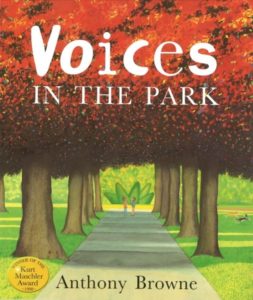
|
In Anthony Browne’s Voices in the Park (Dorling Kindersley, 2001), a snobbish society mother, her buttoned-up son, Charles, and their pedigreed Labrador retriever visit the park at the same time as an unemployed father, his daughter, Smudge, and their rambunctious mongrel. The story is told in four different voices, from four very different points of view. All the characters are anthropomorphic apes. For ages 7-11. |
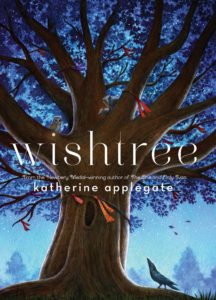
|
Katherine Applegate’s Wishtree (Feiwel and Friends, 2017) is told from the point of view of a tree – the wise and kindly Red, an oak. For ages 8-12. |
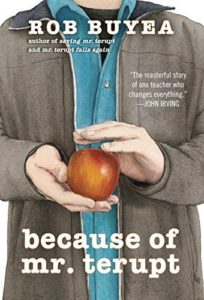
|
Rob Buyea’s Because of Mr. Terupt (Yearling, 2011) is the story of a life-changing teacher and a disastrous accident, told from the varying points of view of seven very different fifth-grade students. For ages 9-12. |
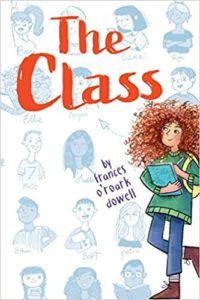 |
Frances O’Roark Dowell’s The Class (Atheneum/Caitlyn Dlouhy Books, 2020) is a story told in 20 different distinct voices from Ms. Herrerra’s sixth-grade class. For ages 9-13. |
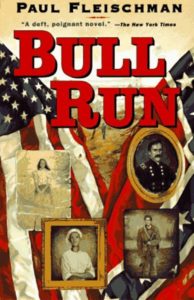
|
Paul Fleishman’s Bull Run (HarperCollins, 1995) is the story of the Civil War, told from the points of view of sixteen different people, with sixteen widely different attitudes and backgrounds. For ages 10 and up. |
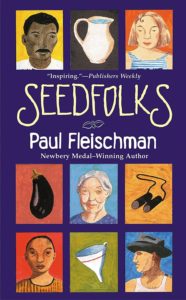
|
Paul Fleischman’s Seedfolks (HarperTrophy, 2004) is told in thirteen different voices, beginning with nine-year-old Kim, daughter of Vietnamese immigrants, who plants some bean seeds in a vacant lot. Thus begins a community garden, with its growing cast of multicultural narrators, each with a different array of goals, problems, and perspectives. For ages 10 and up. |
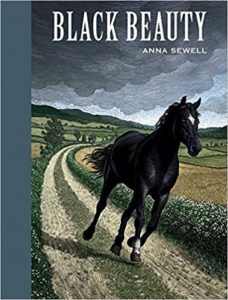
|
Anna Sewall’s classic Black Beauty, available in many editions, was originally published in 1877. The story of Black Beauty’s life, from pampered carriage horse to abused cab horse to peaceful retirement, is narrated in the first person from the point of view of the horse himself. For ages 12 and up. |
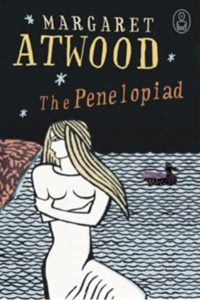
|
Margaret Atwood’s Penelopiad (Canongate, 2006) is a new view of the Odyssey, told from the perspective of long-suffering Penelope and her twelve maids, the latter all hanged by Odysseus when he returned home. (“I knew he was tricky and a liar, I just didn’t think he would play his tricks and try out his lies on me,” Penelope says.) For teens and adults. |
